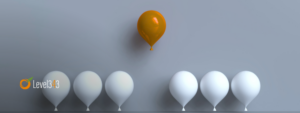Undertaking a redesign is usually a pretty big project. In addition to the actual design work, there are so many little details related to SEO and marketing that you need to consider.
To help you out, here are some of the common problems you want to avoid:
Don’t forget to add your Analytics code to the new site. You don’t want to lose crucial data by forgetting to add the code. From time to time, Google updates the format of the code/scripting, so ensure you have the most recent code. Use the same account you’ve always used, you don’t want to lose the history.
Most designers use some method of stopping the engines from spidering the work in progress. That is a great idea but it can kill your traffic if you forget to remove it when the site goes live. Check pages for tags blocking the engines and check your robots.txt file.
Don’t forget to clean the old files off your server when the new site is live. You don’t want to lose them, so ensure you back it up somewhere. If you are going to leave it on the server, put it all in a sub-directory and ensure the engines do not spider that directory. You don’t want to create duplicate content.
Track your Tools & Analytics
Don’t forget to closely track your Webmaster Tools and Analytics after a redesign. You want to look for 404 errors and you want to keep an eye on your conversion rate. If it plummets after a redesign, you want to catch it quickly and work to restore it. If there is a conversion problem after a redesign, you should look at the pages that aren’t performing as well (Google Analytics should give you that data) and compare the old page to the new. Try to find elements on the old page that you think could have been responsible for the higher rate and implement those elements into the new site. New isn’t always better and sometimes a marriage between new and old is what works best.
Don’t forget to thoroughly test before you go live. Test all links, forms, buttons and scripts. A new look isn’t worth much if your visitors can’t do the things they need to do on your site.
Ensure you create a comprehensive mapping of old pages to new pages if the URLs are changing. You need to set up 301 redirects from the old URLs to the new ones so you don’t lose traffic.
Before you get started, spend time planning the new site. It’s going to be time well spent, I promise. Why go through all the effort and cost of a redesign if you aren’t going to ensure everything is set up properly? Plan your site structure to ensure you have all the pages you need and to ensure it’s all organized logically and cleanly. This will be beneficial for the engines and for your site visitors. You don’t want anything to be more than 1-2 clicks from the homepage.
Content & Appearance Matter
Remember, appearance matters but so does content. Most people only think about the visuals when they redesign, but it’s actually a great time to update and refresh your content too.
If your developer was working with any scripting in the design and development process, ensure test pages aren’t left on the server. They create “gaps” in your security that could cause your site to be compromised.
If you are using WordPress, ensure all plugins are current and create a plan to keep them current. Old plugins are a major security risk.
If during the redesign you are cleaning up scripts and moving them to external files, be sure to test all functionality related to the scripting.
Update Your WordPress Themes and Plugins
Often WordPress has a few different themes sitting in there, even though you are only using one a t time. Unused themes and plugins (inactive plugins) do create serious problems with security and could cause a breach. It’s so easy to add themes and plugins when you need them, so get in the habit of keeping your WP installation clean and add only items you plan to use.
Don’t forget about Terms of Service and privacy pages. They may not be sexy, but they are needed and it’s nice if they match the vibe of the site, so ensure they get redesigned too (or added if you never had them).
Social is a Thing
Don’t forget social buttons. If your old site didn’t have social buttons implemented yet, you want to ensure you have them added to the new site.
Don’t add content just for the sake of adding content but if you notice in your planning stages that you are not covering information that you should be, it’s a great time to introduce new pages.
If possible, go with search engine friendly file names on the new site.
Don’t forget to include any credibility factors (logos of associations, details on awards and accolades etc).
Avoid “Coming Soon” pages. If the content isn’t ready to go, don’t link to the page yet.
Create a strong, custom 404 page (that is optimized).
If you address and phone number aren’t prominent (in text format, not images), get that changed. It’s a simple fundamental that should be in place.
Consider mobile when you redesign your site. Even if you don’t have responsive design or a fully mobile version of your site, you can still design it to be more “mobile friendly”.
Conclusion
And lastly, ensure your new site is properly optimized and you have an XML sitemap in place.
If you haven’t done a redesign in a while, it may be time. Don’t stress, just keep a check list of all the items and nothing will slip through the cracks.








































9 Responses
I LOVE when clients come to me to do an SEO audit after they launch a redesign (said in a sarcastic tone). Wow too many site owners, designers, managers, developers fail on so many of these issues its crazy. Biggest fail to date other than the “oops the site’s blocked from crawl now”? Yeah – redesign resulted in an instant jump in 404 not-found errors from several thousand to….
4.5 million.
🙂 SERIOUSLY – people need to take this article and pin it to their foreheads!
Have I mentioned you are awesome? Oo & just an FYI, it was really a pleasure meeting you. 🙂
Thanks for a really nice post. Once I have a webpage or blog up and running I do not want to do a redesign since it might make a big impact on SEO. This article will help me with this.
Thanks for this good post Jennifer. Just to add avoid horizontal scrolling, do not design your site so you need to scroll horizontally to browse the stuff on your website. This is so annoying and will probably lead you to lose traffic.
Hey guys, just want to say thanks for all the great marketing tips you have come up with. I work in a marketing department for a small consulting firm, and we have been doing a lot to enhance our webpresence. Lately, we have been focusing on our offsite presence like social media. Your post has got me thinking that I should put some more effort into on-page optimization. Our website is http://www.argopoint.com/. Please check us out and give us some pointers.
Thanks for the useful info. From me I would add that considering good so-called ‘heatpoints’ is very crucial aspect of designing a good website. Without it we are having less chances for succeeding in our business goals. Good planning on where some elements of our page should be is very important for both good user experience and conversion rates. How about you write a post about it next time? 🙂
C.
6. Graphics If you don’t have a lot of good graphics on your website it might be a good time to look into some redesign because graphics really aid in making a website more interesting.